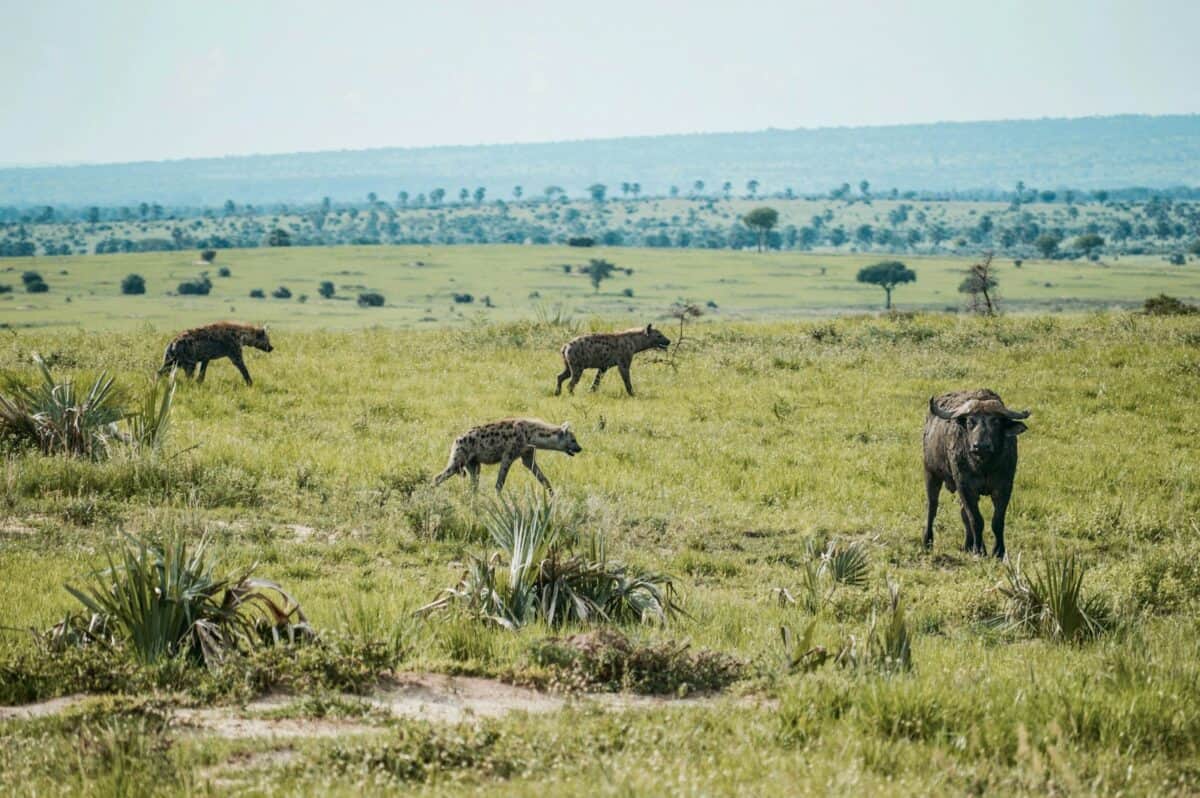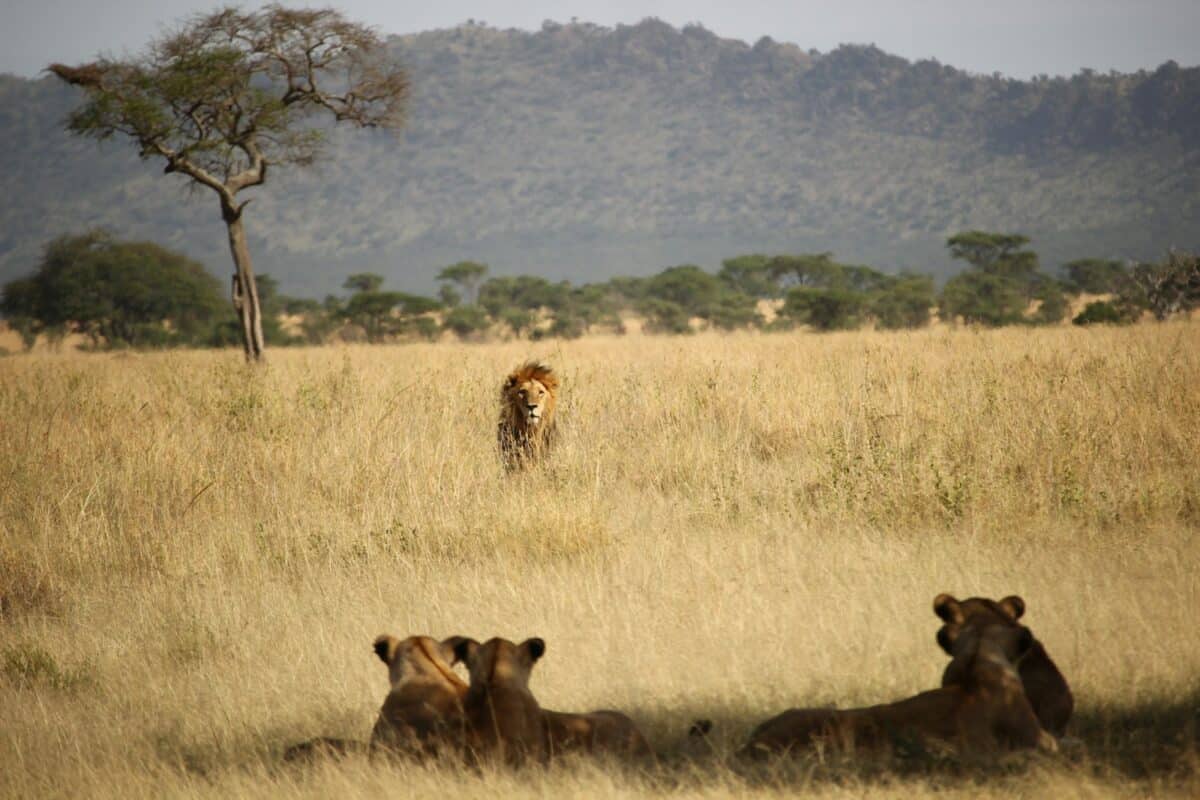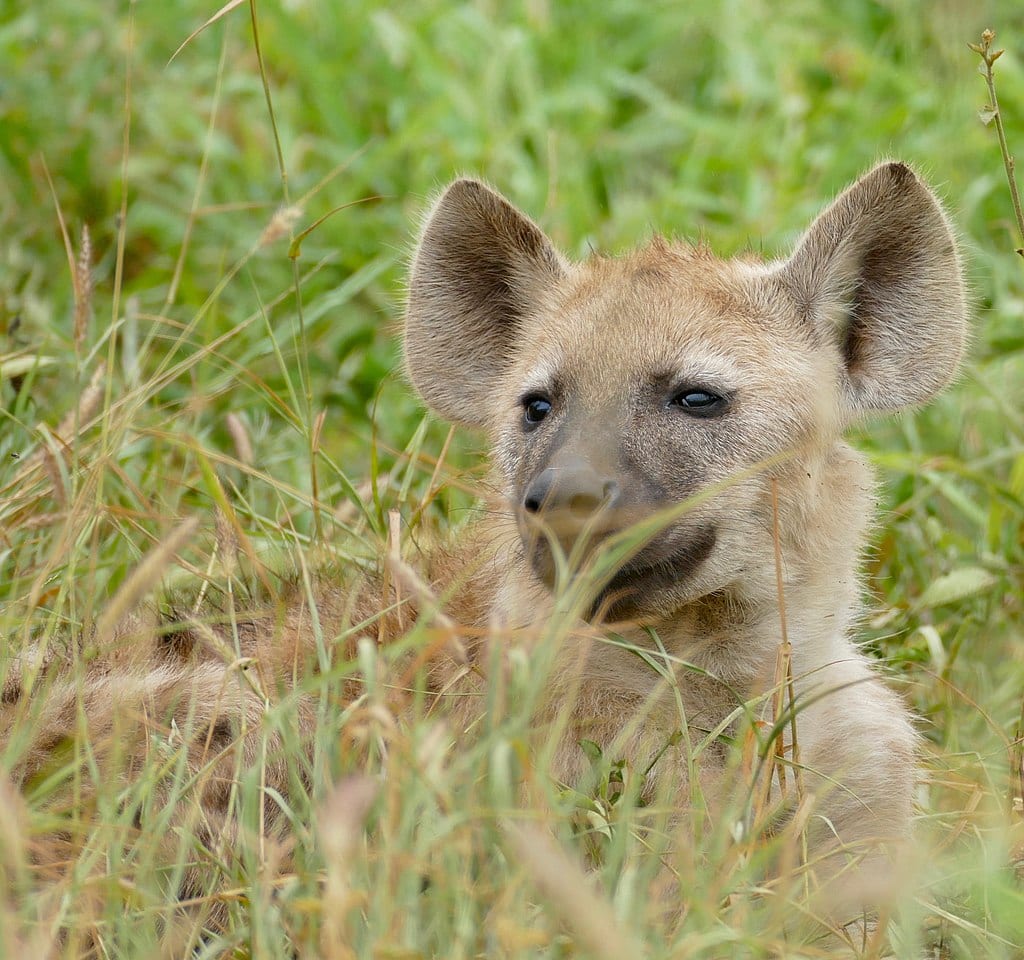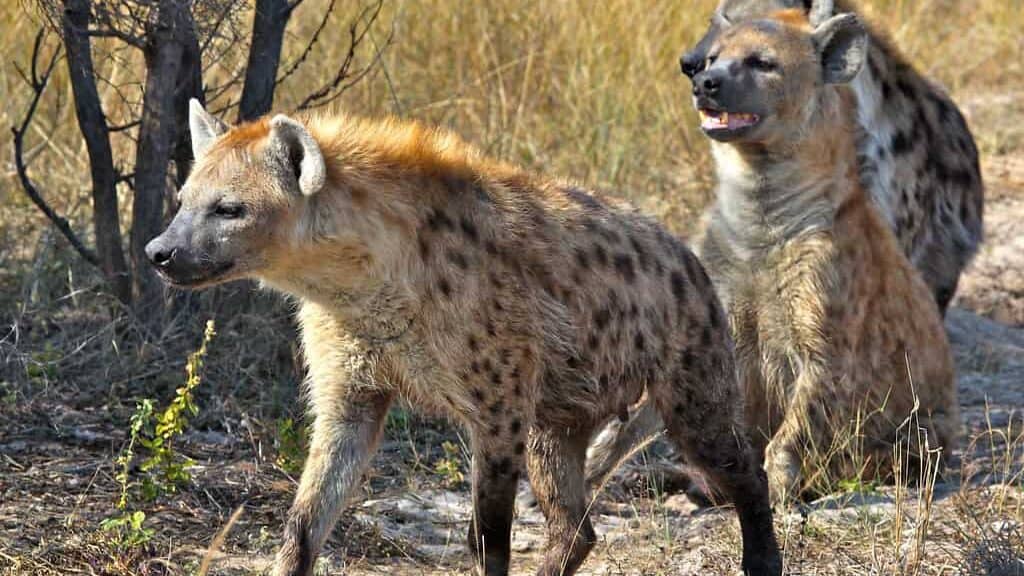When Disney’s “The Lion King” hit theaters in 1994, it captivated audiences worldwide with its stunning animation, memorable songs, and compelling story of Simba’s journey to reclaim his throne. Yet amid the film’s majesty, one group of characters received a particularly unflattering portrayal: the hyenas. Depicted as dim-witted, menacing scavengers who blindly follow Scar’s evil schemes, these animated villains have significantly influenced public perception of real hyenas for generations. But how accurate is this portrayal? The gap between Hollywood’s representation and the fascinating reality of hyena behavior, intelligence, and social structures is not just wide—it’s a chasm that has contributed to misunderstanding one of Africa’s most remarkable predators.
The Lion King’s Villainous Portrayal

In Disney’s animated classic, hyenas Shenzi, Banzai, and Ed serve as Scar’s henchmen—portrayed as skulking, sinister creatures with poor hygiene, simple minds, and a propensity for mindless laughter. They inhabit the shadowy “Elephant Graveyard,” a forbidden wasteland beyond Pride Rock’s borders. The film reinforces these negative stereotypes through visual cues (hunched postures, drooling mouths, glowing eyes) and character traits (cowardice when confronting lions alone, but menacing when in groups). This characterization wasn’t created in a vacuum; it drew upon centuries of negative folklore and misunderstandings about hyenas that existed long before the film. The portrayal was so effective that for many children of the 1990s and beyond, their first and most lasting impression of hyenas came not from nature documentaries but from these cartoon antagonists.
The Hyena Species in Reality

Contrary to “The Lion King’s” single portrayal, there are actually four distinct hyena species, each with unique characteristics. The spotted hyena (Crocuta crocuta)—which most closely resembles the film’s characters—is Africa’s second-largest predator after lions. The striped hyena (Hyaena hyaena) ranges across North and East Africa, the Middle East, and India. The brown hyena (Parahyaena brunnea) is found in southern Africa, while the aardwolf (Proteles cristata) is a highly specialized insectivore that primarily eats termites.
These diverse species have evolved to fill different ecological niches. Spotted hyenas, with their powerful jaws that can crush bones, are active hunters rather than mere scavengers. Brown hyenas are primarily scavengers but also opportunistic hunters. The aardwolf, despite its hyena classification, is entirely non-threatening to other mammals, using its long tongue to collect termites much like an anteater.
Hyena Intelligence: Far From Dim-Witted

Perhaps the most egregious misrepresentation in “The Lion King” is the portrayal of hyenas as unintelligent. Scientific research has thoroughly debunked this notion. Studies conducted at the University of California, Berkeley and other institutions have demonstrated that spotted hyenas possess problem-solving abilities that rival or exceed those of great apes. In captive studies, hyenas have outperformed chimpanzees on cooperative problem-solving tasks, showing remarkable ability to work together to obtain food rewards.
They display excellent memory, recognizing clan members after separations of years, and can adapt quickly to changing circumstances. Their cognitive abilities extend to understanding complex social relationships within their clans, requiring sophisticated social intelligence to navigate their hierarchical society. Far from the bumbling sidekicks depicted by Disney, real hyenas possess some of the most advanced cognitive abilities in the animal kingdom.
Complex Social Structures

While “The Lion King” shows hyenas as anarchic followers of a lion’s leadership, real hyena society couldn’t be more different. Spotted hyenas live in complex matriarchal clans that can number up to 80 individuals. These societies are structured around strict female-dominated hierarchies that are stable across generations. Female hyenas outrank all males, with social status inherited from mothers. This sophisticated social organization requires considerable intelligence to navigate.
Cubs learn their place in the hierarchy from birth, with higher-ranking females’ offspring receiving preferential treatment. Research by zoologist Kay Holekamp at Michigan State University, who has studied spotted hyenas for over 30 years, reveals that hyena societies exhibit political alliances, coalitions, and reconciliation behaviors similar to those observed in primates. These complex social dynamics allow clans to defend territories, coordinate hunts, and raise young collectively—a far cry from the chaotic followers depicted in the animated film.
Hunters, Not Just Scavengers

One of the most persistent myths about hyenas, reinforced by “The Lion King,” is that they are primarily scavengers who rely on stealing kills from “noble” predators like lions. Field research conclusively disproves this notion. Spotted hyenas are formidable hunters who secure up to 95% of their food through their own hunting prowess. They are persistent pursuers capable of chasing prey for several kilometers at speeds up to 60 km/h (37 mph). Their hunts are often carefully coordinated group efforts, with different individuals playing specific roles to tire and isolate targeted prey.
Studies in the Serengeti have shown that it’s actually lions who frequently steal kills from hyenas, not the other way around—a behavior called kleptoparasitism. When lions and hyenas compete for the same resources, the outcome often depends on the number of individuals present from each species rather than any inherent dominance. In the Ngorongoro Crater of Tanzania, researchers have documented that hyenas kill approximately 75% of all prey in the ecosystem, making them the primary predators, not lions.
The Distinctive Hyena “Laugh”

In “The Lion King,” Ed’s maniacal, uncontrolled laughter portrays hyenas as slightly deranged and sinister. The real vocalization that inspired this characterization is actually a complex form of communication that serves specific social functions. The famous “laugh” is technically a series of staccato sounds called a giggle call, primarily made by subordinate hyenas in tense or anxious social situations. Research by Dr. Nicolas Mathevon and colleagues has shown that these calls communicate important information about an individual’s age, status, and identity.
Higher-pitched giggles typically indicate subordination or submission, not humor or malice. Spotted hyenas have one of the richest vocal repertoires of any terrestrial mammal, with at least ten distinct vocalizations including whoops, grunts, yells, and growls. Their most impressive vocalization is the “whoop”—a loud, far-carrying call used to gather clan members across long distances. These sophisticated communication systems reflect the complex social lives of hyenas and their need to coordinate activities across their territories.
Female Dominance and Unique Reproductive Biology

Spotted hyenas exhibit one of the most extraordinary gender role reversals in the animal kingdom—a biological reality completely absent from “The Lion King’s” portrayal. Female spotted hyenas are not only larger and more aggressive than males, but they also possess perhaps the most masculinized external genitalia of any female mammal. They have an elongated clitoris, or pseudopenis, through which they urinate, mate, and even give birth. This unusual anatomy results from exposure to high levels of androgens (male hormones) during development.
Female dominance is established early in life, with even infant females outranking adult males who aren’t born into the clan. This biological and social arrangement directly contradicts the male-dominated hierarchy shown in “The Lion King,” where Scar commands the hyenas. In reality, a male lion would have no authority in hyena society—particularly telling is that the film’s lead hyena, Shenzi, is female (voiced by Whoopi Goldberg), yet defers to Scar, reflecting human patriarchal structures rather than hyena biology.
The Lion-Hyena Relationship

The antagonistic relationship between lions and hyenas depicted in “The Lion King” does have some basis in reality, but the film oversimplifies and misrepresents the dynamic. In the wild, lions and spotted hyenas are competitors who frequently come into conflict over territory and food resources. Both species will kill each other’s young when possible, and violent encounters between adults can result in serious injuries or death. However, the relationship is one of competition between apex predators, not of natural enemies or morally opposed forces.
The outcome of lion-hyena interactions depends largely on numbers—a single lion may drive off several hyenas, while a large group of hyenas can chase away or even kill a lion. Research by Dr. Marion East and Dr. Heribert Hofer in the Ngorongoro Crater found that lions are responsible for up to 55% of hyena cub mortality in some areas, indicating the real stakes of this competition. Rather than serving lions as “The Lion King” suggests, hyenas actively compete with them as ecological equals.
Ecological Importance

Far from being destructive forces that threaten the “circle of life” as portrayed in the Disney film, hyenas are actually keystone species that play crucial roles in maintaining healthy ecosystems. As efficient predators and scavengers, they help control prey populations and clean up carcasses that might otherwise spread disease. Their powerful digestive systems can process almost all parts of their prey, including bones, which they break down with stomach acid stronger than battery acid. Only hair, hooves, and keratin pass through their digestive tract unprocessed.
This ability to consume and process carrion completely helps recycle nutrients back into the ecosystem more efficiently. By targeting weak or sick animals during hunts, hyenas also help strengthen prey populations through natural selection. Studies in areas where hyenas have been eliminated show disrupted predator-prey dynamics and less healthy herbivore populations. Their presence creates what ecologists call a “landscape of fear” that prevents prey animals from overgrazing sensitive areas, thus protecting plant diversity and preventing erosion.
Conservation Status and Threats

While “The Lion King” portrays hyenas as abundant menaces, the reality for most hyena species is concerning. The International Union for Conservation of Nature (IUCN) lists brown hyenas as Near Threatened, with fewer than 10,000 remaining in the wild. Striped hyenas are also Near Threatened, with populations declining across their range. Even spotted hyenas, though currently classified as Least Concern, face increasing threats from habitat loss, human-wildlife conflict, and poaching.
Hyenas suffer from one of the worst public relations problems of any animal group, largely due to negative cultural depictions like those in “The Lion King.” This poor image translates to less conservation funding and public support compared to more charismatic predators like lions and cheetahs. In some regions, hyenas are persecuted due to perceived threats to livestock, though studies show they prefer wild prey when available. Their body parts are also used in traditional medicine in some cultures, driving poaching pressure. Conservation efforts are hampered by these negative perceptions, making accurate representation of hyenas in popular media not just a matter of scientific accuracy but of conservation importance.
Cultural Representations Throughout History

“The Lion King” didn’t invent negative hyena stereotypes—it drew upon and reinforced centuries of unfavorable portrayals across cultures. In ancient Egyptian art, hyenas were depicted as unclean creatures associated with chaos. Greek and Roman natural historians described them as grave-robbers with magical properties. Medieval European bestiaries portrayed hyenas as hermaphrodites with mystical powers and connections to the devil. In many African folktales, hyenas represent greed, stupidity, or witchcraft.
These persistent negative cultural associations have deep historical roots in hyenas’ nocturnal habits, unusual vocalizations, and scavenging behaviors that humans have long found unsettling. The distinct laugh-like vocalization has particularly contributed to their sinister image, as it sounds eerily human-like yet alien. Even in scientific literature, hyenas were misunderstood until relatively recently, with early researchers focusing on their scavenging rather than their hunting abilities. “The Lion King” tapped into these established tropes rather than challenging them, perpetuating stereotypes to new generations who might otherwise have learned to appreciate these remarkable animals.
The Impact of Media Representation on Public Perception

The power of popular media to shape public perceptions cannot be overstated, particularly when it comes to wildlife. Research by conservation psychologists has shown that fictional portrayals of animals significantly influence how people perceive them in reality. For many children worldwide, “The Lion King” provides their first and most emotionally impactful introduction to hyenas, creating associations that can last a lifetime. A 2008 study published in Human Dimensions of Wildlife found that negative media portrayals of predators directly correlate with reduced public support for their conservation.
When survey participants were shown positive information about hyenas after viewing clips from “The Lion King,” their attitudes improved significantly, suggesting the film’s portrayal has measurable effects on conservation attitudes. Wildlife documentaries featuring hyenas typically receive lower viewership than those focused on lions, tigers, or other charismatic megafauna, creating fewer opportunities to correct these misperceptions. Zoologists and conservationists working with hyenas frequently report having to overcome public prejudice shaped by popular culture before they can effectively communicate the scientific value and conservation needs of these animals.
Conclusion: Separating Fact from Fiction

The contrast between Disney’s villainous hyenas and the remarkable reality of these complex predators highlights the power of storytelling to shape our understanding of the natural world—for better or worse. While “The Lion King” gave us memorable characters and a compelling narrative, it did so at the expense of one of Africa’s most misunderstood and ecologically important animal groups. Real hyenas are intelligent, socially sophisticated predators who play crucial roles in their ecosystems, not the simple-minded, skulking scavengers portrayed in popular culture.
As conservation challenges mount for all wildlife in the 21st century, accurate representation matters more than ever, affecting public support for protection efforts and funding priorities. Perhaps the greatest lesson from this comparison is the importance of approaching wildlife with curiosity rather than preconception, allowing ourselves to appreciate the actual behaviors and adaptations of animals rather than the versions crafted for our entertainment.
- How Sloths Help Support Mini-Ecosystems in Their Fur - August 9, 2025
- Eagles vs. Snakes: Who Would Win? - August 9, 2025
- Why Pandas Were Once Nearly Extinct—and How China Saved Them - August 9, 2025

